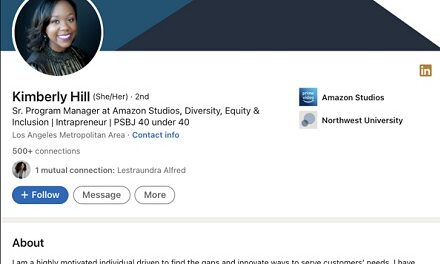Corporate Culture in 2024
What is corporate culture?
Each business has a different way of operating, leadership skills, core values, and goals – these can be broadly summed up as factors that make up the organizational or ‘corporate culture.’
However, corporate culture can be much more than this, including a company’s public image, how it attracts new employees, and the philosophy used in decision-making.
Some businesses provide free tea and coffee for their employees and believe that all this is necessary for a beneficial corporate culture.
Other companies offer fully flexible working with remote offices and work-from-home options.
Many employers prioritize employee hiring, completely adapting the work environment to attract the best and brightest in new talent.
For some businesses, a high priority is placed on the learning and development of employees, as well as opportunities to pursue further qualifications, such as sponsored tuition for an MBA.
Corporate culture is a workplace’s unique social structure and psychological environment, and no two organizations are completely alike.
Any organization must view its company culture as the personality of the business and the foundation of its success.
Why is corporate culture important?
To some people, investing in a business culture may seem a bit ‘fluffy,’ a feel-good element of a workplace that needs to be clarified. But the right corporate culture can improve an organization’s effectiveness and enhance employee experience and purpose.
Regular team building is a feature in organizations with an excellent corporate culture, as is open communication from the top down, including open channels for feedback, concerns, and new ideas.
Corporate culture structures the business – from the values and beliefs that help achieve goals, to work standards, employee attitudes, and self-image to productivity and performance. It is a shared understanding of ‘what is expected’ – from leadership to employees to public perception.
Every society needs structure, and the workplace is no different. Organizational structure depends on a shared understanding and knowledge of business goals, with values and expectations that are clear and widely shared so that all processes and procedures can be followed to ensure success.
How is corporate culture formed, and can it change?
The type of industry can determine the culture that is formed through necessity.
A more definite and logical company culture may be necessary for success for companies that require stability and control, such as construction or government departments.
For others, such as tech or software startups, greater flexibility and individuality may be key to staying ahead of the curve.
Although it requires careful consideration, it is possible to change company culture.
There needs to be a structured plan considering all aspects of the organization, from company values and identity to investing in employee well-being and ensuring that feedback is taken on board.
Recruitment also needs to look at: how the business attracts the right employees, flexible working arrangements, learning and development, recognition, how the business communicates internally, and the public image it seeks to present.
With all of these considerations, there is a need to get buy-in from all employees, with changes made gradually.
By implementing changes in phases, evaluating results with the input of all employees, and using leadership teams that can communicate changes with authenticity and transparency, an organization can improve company culture.
How does corporate culture affect employee behavior?
There’s a magnetic quality to the right culture that will bring talented people to your organization – and getting it right is much more than ‘things.’
Break-out areas with ping-pong tables, free fruit Fridays, and company socials are one aspect that can benefit your employees, but investing in your workplace culture will communicate to the organization that employees are the most important asset in business. Huh.
Happy employees are more productive, have a shared understanding of the company’s goals and vision, and feel empowered and engaged. This level of job satisfaction will reduce employee turnover and reward the loyalty of those who do well in that culture.
Perks, benefits, rewards, incentives, and clear communication can take company culture to the next level, ensuring all employees are excited to work towards shared goals aligned with the company’s vision and ethos. Everyone is ready to work for the benefit of this organization.
Four Types of Corporate Culture
Although four different types of corporate culture are described here, the differences are hard to define for many businesses.
Some occupations inherently require stability and control, while others value flexibility and initiative.
Some organizations have an internal focus, while some have an external focus.
The ‘this or that’ nature of these descriptors may not pertain to all occupations, so there is a possibility of gradual differences or mixing of parts of one culture with others.
In some organizations, different departments may have a different type of culture – production may be more hierarchical, while marketing may be considered more ad hoc.
Many businesses will fall somewhere between these binary values:
- Hierarchy
Hierarchical cultures rely on procedures and policies to give reliable, stable, and efficient results.
They are often highly structured with a strong internal focus and fixed-stratified leadership systems.
Leaders are perceived as skilled problem solvers, and employees learn their roles as experts.
In a hierarchical culture, uniformity and traditional values are important, and the bottom line takes precedence with risk-averse decision-making.
Pros and Cons for Employees
Pros
Defined roles and specified instructions ensure employees understand their responsibilities.
Employees consistently achieve status through dedication and hard work.
Shortcoming
Limited career progression with high competition for promotions available
Teams can become ‘silenced’ with less interaction with individual regions
Pros and Cons of Organization
pros
Managers and other leaders are recognized and provide firm direction
Production and delivery are predictable and reliable
Profitable decisions are taken by the management and directors, making them faster
Shortcoming
Communication between departments and through the management structure can take time and effort.
Multiple layers of management and staff can have a high cost
Public perception of the company may be affected, as it is being seen as faceless
Opportunities for innovation and growth may be stifled because the company needs to be faster to react to change.
Example of Hierarchical Culture
Ford Motor Company is a great example of a successful hierarchical culture.
There are clearly defined roles for each employee, with stratified designations for leadership and upper management.
Employees are hired for their skills, which can develop within their roles, and job satisfaction comes from following a pre-determined structure.
- Market
A market culture is one where the focus is on ‘getting things done.’
With an emphasis on results and success, it is a competitive environment that is goal-oriented, and leaders have high expectations of their employees and drive their teams to work hard.
This culture incentivizes employees through competition and has a strong external focus.
One way employees can improve their experience in this environment is by learning more about becoming more results-oriented.
Pros and Cons for the Employee
pros
strong attention from employees
Employees are open to learning new skills to be more successful.
Shortcoming
A competitive environment can be unpleasant.
Employees can quickly become overworked and stressed
Low morale can affect employee retention
Pros and Cons of Organization
pros
Market culture organizations are likely to be leaders in their industry
Reputation, success, and market leadership are ensured by employees who strive to be the best
Pushing to meet targets is more likely to result in higher revenue and, therefore, higher profits
Shortcoming
Constantly being ahead of the curve can be costly.
A toxic, overly competitive work environment can lead to burnout.
example of market culture
Many fast-paced sales roles are examples of market culture; one of the most obvious is Amazon.
While employees in the warehouse and distribution arm of the business may be considered to be in a hierarchical culture, the sales and marketing teams are solely focused on driving the business forward in a culture that promotes higher profits and directly competes. Encourages.
-
Clan
This type of culture is sometimes referred to as a ‘family’ culture. Characterized by a friendly atmosphere, Clan’s culture ensures that employees and leaders are involved, have the opportunity for long-term career development, and demonstrate strong loyalty.
There is a focus on partnership and teamwork where customer and employee needs are a high priority.
This environment is more person-centered, allowing people with common beliefs and loyalties to become more involved and invested in what is sometimes described as a ‘culture of happiness.’
Pros and Cons for the Employee
pros
Employees have good relationships with co-workers
employees enjoy being at work
Shortcoming
Social and professional boundaries may blur
too much collaboration distraction
‘Pack’ mentality can lead to polarization
Pros and Cons of Organization
pros
Leaders mentor, help, and provide direction while encouraging creativity
Communication is clear and inclusive and encourages feedback so employees can raise concerns and share new ideas
Collaboration gives everyone ownership of decisions
Happy employees help businesses grow and develop
Shortcoming
Leaders may need help to maintain authority.
Collaboration can mean that decision-making becomes a long process
find it difficult to make decisions that may be perceived as difficult, such as cutbacks or changes in work routines
example of clan culture
One of the best-known examples of clan culture is Google.
The tech giant is known for flexible working and a fun office environment with video games and nap pods. He actively encourages employees to innovate through weekly skill shares and open communication throughout the workplace.
-
Hegemony
It’s a fast-paced, dynamic culture that allows employees to experiment, try new things – and maybe even fail – so they can aggressively pursue ideas that leak. Can be considered a departure from
In a democratic culture, leaders are entrepreneurs and visionaries who encourage their employees to find creative solutions.
Pros and Cons for the Employee
pros
Perfect for flexible working and personal freedom
dynamic, fast-paced environment
Experience and skills are not considered as important as personality and creativity.
Shortcoming
The work environment is often unstable
The workplace can be intimidating for newbies.
A fast-paced environment can make employees vulnerable.
Pros and Cons of Organization
pros
usually industry leaders
Looking to the future through innovation
Innovative thinking is driven by innovative thinking – products, and solutions critical to the growth
Organizations can react quickly to change and pivot where needed.
Shortcoming
The focus on individuality makes it difficult to reach any consensus
collaboration can be uncomfortable
Risky behavior can lead to failures – it’s expensive to fix.
example of adhocracy culture
Apple is known for its industry-leading products and innovations and is a classic example of ‘blue-sky’ thinking and creative problem-solving.
Employees are hired because they are the best at work and are recognized and rewarded for excellence.
Apple’s premise of being at the forefront of the tech space is tied to allowing employees to innovate at all levels in the business.
final thoughts
While the industry may dictate corporate culture, it is in the best interests of any organization to invest in improving company culture.
Whether creating an employee wellness program, a new way to communicate, or even something as simple as allowing for more flexible working patterns where possible, investing in employee wellness is an important step in creating a culture Where all employees feel valued.
Employees who are happy, safe, and rewarded for their work are more likely to be engaged and enthusiastic participants in their organization’s success – and focusing on recruiting the right kind of employees is one way to develop and improve the culture. Great way.
Understanding where you feel comfortable as an employee in terms of culture will help you decide which organizations are the best fit for you.
A hierarchical culture may be best suited if you thrive in defined roles with clear goals.
If you’re the creative type who thinks unconventionally when faced with a problem, you may be best suited for a role that is broadly democratic.
Company culture is not fixed; it can be changed and improved under the right strategy – and investing in improving company culture can transform an organization for its employees, managers, public perception, and bottom line.






